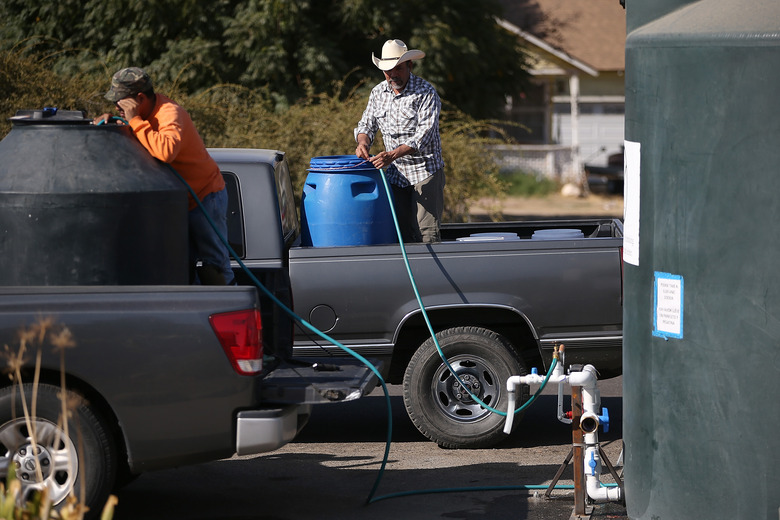What Are The Causes Of Water Stress?
No human population can sustain itself without sufficient access to fresh water. According to Evergreen State College, if present conditions continue, 2 out of 3 people on Earth will live within a water-stressed zone by 2025. The term "water stress" refers to the suffering in a region caused by the water scarcity in that area. Water stress can occur due to political and economic factors.
Supply and Demand
Supply and Demand
Many major crises involving water scarcity strike when a growing population's demand for water exceeds the area's ability to supply that population's needs. Increased food production and development programs can also increase the demand for water in a region, which may eventually lead to water stress. The increased need for agricultural irrigation in order to produce more crops or sustain more livestock, for example, can be major contributors to local water stress.
Overconsumption
Overconsumption
The demand for water in a given population can be somewhat unpredictable. Sometimes, local people will come to the conclusion that there is actually plenty of water available for whatever reason. As a result, their demand for water will increase beyond what they require at a basic level. If too many people are consuming more water than they need because they mistakenly believe that water is freely available and plentiful, then water stress could eventually occur.
Water Quality
Water Quality
The water quality in a given area is not static. Water stress sometimes happens as a result of rising pollution levels causing changes in water quality. Water contamination can happen because of new industries or new local industrial practices, particularly if these industries are unregulated. Agricultural pollution in particular is often a factor in water quality changes. Local populations sometimes use potential sources of drinkable water for other purposes, such as bathing. A number of personal habits and societal practices can lower the quality of the water source, thus leading to water stress.
Water Scarcity
Water Scarcity
Other causes of water stress involve combinations of factors. Sometimes, simple increases in the demand for water can be enough to contribute to water scarcity, in addition to factors like poverty or the natural scarcity of water in arid conditions. If the region already lacks the necessary infrastructure for drawing sufficient water resources from a given area, then even small fluctuations in pollution or population levels can cause water stress. Fresh, drinkable water is a vulnerable natural resource.
Cite This Article
MLA
Morgan, Sam. "What Are The Causes Of Water Stress?" sciencing.com, https://www.sciencing.com/causes-water-stress-7258821/. 24 April 2017.
APA
Morgan, Sam. (2017, April 24). What Are The Causes Of Water Stress?. sciencing.com. Retrieved from https://www.sciencing.com/causes-water-stress-7258821/
Chicago
Morgan, Sam. What Are The Causes Of Water Stress? last modified March 24, 2022. https://www.sciencing.com/causes-water-stress-7258821/
